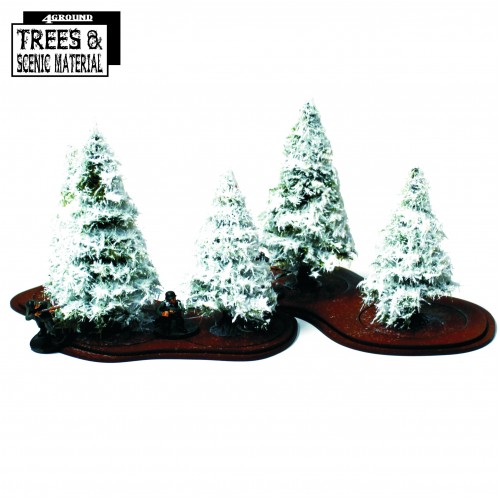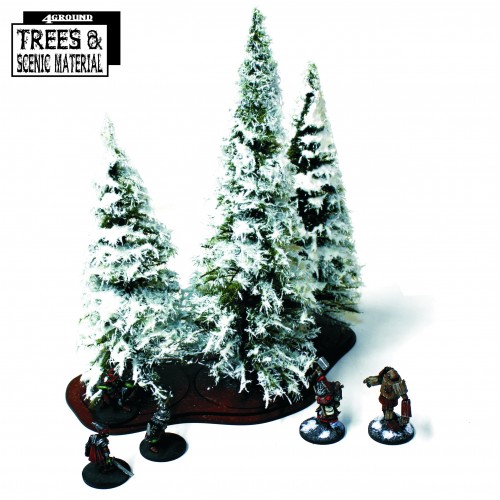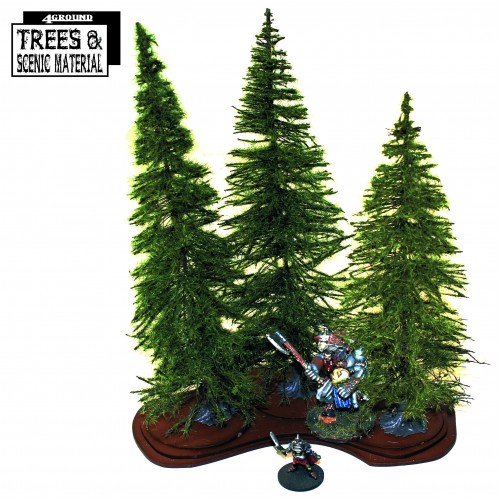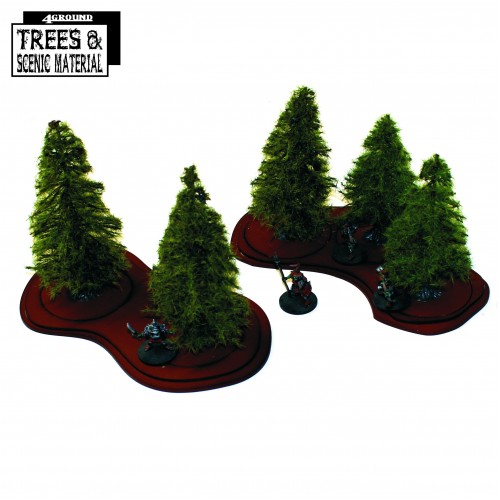HEAD FOR THE TREES… woods have often been a major part of so many battlegrounds throughout history. It was the trees that enabled Germanic Warbands to ambush the advancing Romans in the Teutoburg Forest and screen the German advance centuries later in the Ardennes.

DEVELOPED FOR WARGAMES… each 4Ground Fir Woodlands pack comes with enough double sided pre-primed scenic tree basing for all of the trees in the pack. The individual trees can tehn be glued to their individual round bases that in turn neatly locate within their collective woodland base. This has two helpfull advantages, allowing you to manouevre your troops through dense areas of woodland terrain, by easily lifting trees out of the way of oncoming troops and replacing them where they were before the troops were placed. The second advantage is that the edges of these woodland bases allow you to easily see where the boundary of your woods begins and ends (for larger wooded areas butt woodland bases up together).
4Ground’s new range of Mature Fir Woodlands allows you to bring your battlefield to life with high quality trees worthy of your battlefield.
TMS-126 Contains 3x Mature Winter Firs
This pack comes with one large tree and two smaller trees.

TMS-127 Contains 5x Young Winter Firs

TMS-128 Contains 3x Mature Firs
This pack contains 2 large and 1 smaller trees.

TMS-129 Contains 5x Young Firs

Firs (Abies) are a genus of 48–56 species of evergreen coniferous trees in the family Pinaceae. They are found through much of North and Central America, Europe, Asia, and North Africa, occurring in mountains over most of the range. Firs are most closely related to the genus Cedrus (cedar). Douglas firs are not true firs, being of the genus Pseudotsuga.
They are large trees, reaching heights of 10–80 m (33–262 ft) tall and trunk diameters of 0.5–4 m (1 ft 8 in–13 ft 1 in) when mature. Firs can be distinguished from other members of the pine family by the unique attachment of their needle-like leaves and by their different cones.
Identification of the different species is based on the size and arrangement of the leaves, the size and shape of the cones, and whether the bract scales of the cones are long and exserted, or short and hidden inside the cone.



